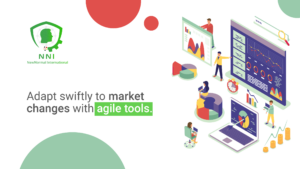Building a Resilient IT Infrastructure through Strategic Leadership and Innovation
In today’s fast-paced business world, the mantra “Foster continuous IT-Resiliency!” is more relevant than ever. This article aims to provide business executives, mid-level managers, and entrepreneurs with insights into the importance of IT resiliency, and how it can be achieved through effective change management, executive coaching, and the strategic use of Generative Artificial Intelligence (AI).
Understanding the Importance of IT Resiliency
IT Resiliency is a critical aspect of modern business operations. It refers to an organization’s ability to maintain essential functions during and after a disruption in IT services. In an age where data breaches, system failures, and cyber-attacks are increasingly common, a resilient IT infrastructure is not just a luxury but a necessity for business continuity and success.
The Role of Change Management in IT Resiliency: Navigating the Evolution of Technology
Change management is an indispensable aspect in the realm of IT resiliency, especially in an era where technology continues to evolve at an unprecedented pace. As businesses strive to stay ahead in the digital landscape, their ability to adapt and integrate new IT solutions rapidly becomes a critical factor in maintaining competitive edge and operational continuity. The role of change management in this context goes far beyond mere adaptation; it is about orchestrating a seamless transition that upholds uninterrupted services even as the technological landscape shifts.
At the core of effective change management for IT resiliency is strategic planning. This involves a comprehensive approach that considers all facets of the organization’s IT needs and future objectives. Strategic planning in this sense is not just about selecting the right technologies but also about understanding the timing, scope, and impact of integrating these technologies into existing systems. It requires a forward-thinking mindset, anticipating not only the benefits but also the potential challenges that new IT solutions may bring.
Risk assessment is another critical component of change management in the sphere of IT. With new technologies come new vulnerabilities and potential threats. Effective change management must therefore encompass a thorough risk assessment process, identifying potential security breaches, system failures, and data loss scenarios. This process should not only focus on preventing risks but also on developing robust recovery and response strategies to ensure business continuity in the event of an IT disruption.
Perhaps one of the most challenging aspects of change management in IT resiliency is ensuring stakeholder alignment. This involves engaging with everyone from the C-suite to the front-line employees, ensuring that they are not only aware of the upcoming changes but are also prepared and trained to adapt to them. Stakeholder alignment is crucial for minimizing resistance and fostering a culture that embraces change. It includes clear and consistent communication, education, and involvement of various departments in the planning and implementation stages.
Change management, therefore, is a comprehensive and continuous process. It is about creating a resilient IT infrastructure that can adapt to changes rapidly and efficiently while maintaining operational stability and security. As technology continues to advance, the role of change management in IT resiliency will only become more integral to organizational success.
Executive Coaching for Leading IT Resilience Initiatives
Executive coaching is vital in empowering leaders to steer their organizations towards IT resiliency. Coaches help leaders develop the skills needed to manage the complexities of modern IT infrastructure, including understanding emerging technologies, making informed decisions about IT investments, and leading teams through digital transformations.
Leveraging Generative AI for Enhanced IT Resiliency
Generative AI is transforming how businesses approach IT resiliency. By utilizing AI for predictive analytics and automated problem-solving, organizations can anticipate potential IT issues before they occur and respond more effectively to unexpected disruptions. This proactive approach is key to maintaining a resilient IT infrastructure.
In conclusion, fostering continuous IT resiliency is a multifaceted endeavor requiring a combination of strategic change management, skilled leadership, and innovative technology. By focusing on these areas, businesses can build a robust IT infrastructure that not only withstands challenges but also drives business success in the digital era.
#ITResiliency #BusinessContinuity #ChangeManagement #ExecutiveCoaching #GenerativeAI























